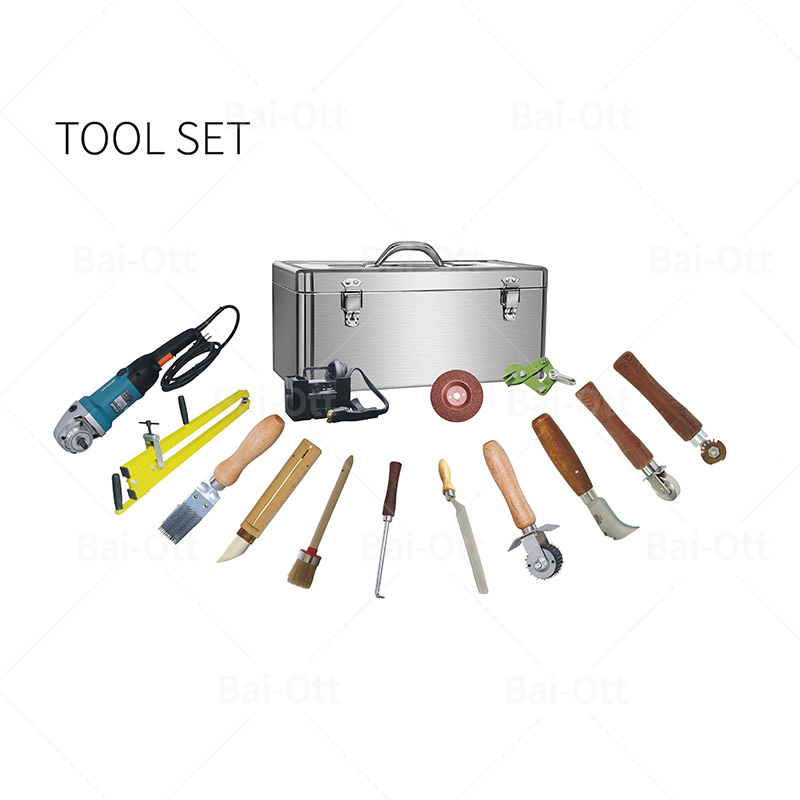What is ceramic pulley lagging
What is ceramic pulley lagging

Ceramic pulley lagging is a kind of roller coated rubber plate with semi vulcanized CN layer on the bonding surface. It is generally divided into drum rubber coated plane wear-resistant rubber plate, drum rubber coated rhombic wear-resistant rubber plate and drum rubber coated ceramic wear-resistant rubber plate. This rubber plate is very wear-resistant and can provide excellent grip between the driving roller and the conveyor belt. Even under various extreme working case, such as muddy, humid and high wear place, the problem can be solved to ensure a normal operation. The normal service life of Ceramic rubber pulley lagging can reach more than 8 years, it has more versatility in various practical application environments and increases the service life of the roller. At the same time, it also prolongs the service life of the conveyor belt. Ceramic pulley lagging is an economic choice to improve the productivity of the conveyor system.
Why choose to use a ceramic pulley lagging?
The use of ceramic pulley lagging can play an important role in ensuring the effective operation of the conveying system and prolonging its service life, mainly due to its special material. The ceramic pulley lagging contains 92% aluminum oxide, and the ceramic block is embedded in the rubber. Aluminum oxide can increase the wear resistance and elasticity of the rubber plate; In addition, you can also choose single-layer or double-layer ceramics, flat or convex ceramics. As a result, the elastic bottom rubber can well protect the conveyor belt. Another advantage of ceramic pulley lagging is that it has a wide range of applications and can be applied to almost any environment, such as roller rubber coating, driving wheel rubber coating and tail wheel rubber coating in extremely harsh environment, transporting all kinds of wet, licking, muddy and high wear material environment, as well as high-strength and high tension conveying system. The above advantages are undoubtedly of great attraction to companies that use the transmission system all year round, because it not only meets the demand of wear resistance, but also ensures the long-term use of the transmission system.
How to make a ceramic pulley lagging?
1. Preparation
First, cut the power of the conveyor and hang the safety warning board.
2. Rubber shovel
According to the residual glue on the drum surface to decide whether it is necessary to shovel the glue
3. Polish the metal surface
When the roller is coated with glue, it is necessary to use mechanical grinding and other methods to remove the organic or inorganic substances on the surface that are not conducive to bonding, provide appropriate roughness for the surface, increase the effective bonding area, improve the wettability of the glue to the surface of the adherend and improve the adhesion performance.
4. Cleaning
The cleaning agent SA3500 needs to be used to remove the dirt on the surface and deeply clean the whole drum surface to prevent various impurities from affecting the bonding effect of glue.
5. Metal surface treatment
It is required to apply evenly and completely without leakage points, and let it completely dry for about one hour.
6. Apply cold vulcanized glue
Apply a layer of cold vulcanized glue SA3000 with uniform thickness on the drum coated with metal treatment agent. It must be completely and naturally dry and no longer adhere to the back of fingers. The drying time is about 45 minutes.
7. Viscose preparation
Determine the bonding reference line on the drum surface: after brushing the second coat of glue, find the reference line for adhesive plate bonding on the drum surface.
8. Glue board
Cover the semi vulcanized layer of the rubber plate with a clean plastic film. According to the datum line found on the drum, tear the plastic film about 50mm wide and start pasting the rubber plate on the surface.
9. Compression
Press down with pressure roller and knock and stick with rubber hammer. The key is that any pressing and knocking must be carried out from the middle of the drum to both sides.
10. Cutting
At the joint, the joint of the rubber plate shall be cut with a knife, and it will be proper if the width of the outer opening be 15mm.
Conclusion:
In the long run, ceramic pulley lagging can not only protect the normal operation of the transmission system, but also effectively prolong the service life of the transmission system. Moreover, the ceramic pulley lagging produced by our company has excellent material, especially in its process, excellent workmanship, which is an ideal choice. The use of ceramic pulley lagging can bring more long-term profits to the company.






